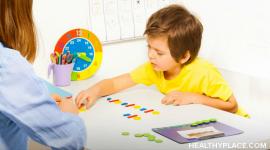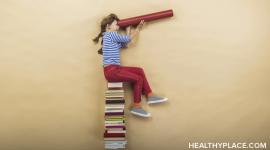What Are Treatments for Learning Disabilities?

Learning disabilities treatment can make a world of difference for a child, not just at school but at home, too. Left untreated, kids can become easily frustrated and experience feelings of failure and inadequacy as they compare their learning disability to their classmates’ learning abilities. Treatments for learning disabilities are actions taken to set up a child for success. As such, learning disabilities treatment can improve learning success as well as a child’s quality of life.
Can a Learning Disability Be Cured?
Because it’s a processing problem within the brain, a learning disability can’t be cured. It can, however, be treated. The sooner the treatment for a learning disability begins, the more effective it is. Identifying and treating a learning problem early allows a child to gain learning strategies before falling significantly behind classmates. Learning disabilities treatment can also minimize or prevent other struggles as well, such as self-esteem problems, emotional, or behavioral issues.
You’re about to learn some common treatment methods for learning disabilities. Before diving into treatments, it’s worth noting that the foundation of any learning disabilities treatment is a child’s strengths. Having a learning disability doesn’t mean that kids have nothing going for them in the classroom or beyond. All kids have strengths and talents. Talk with your child about discovering and applying their strengths and abilities to their learning, social skills, and more.
Learning Disabilities Treatment at School, Home, and Beyond
Your child’s individualized education program (IEP) specifies learning modifications and accommodations. These interventions are important treatment approaches in school. Modifications and accommodations are adjustments that allow kids to learn the same material as their peers, just in a slightly different way. For instance, modifications for a child with a writing disorder might allow the student to complete assignments and tests verbally. Accommodations for a child with a reading disorder could include text-to-speech software.
Many other school-based treatments and interventions are used to support students with learning disabilities. Some of them are:
- Intensive teaching techniques, like one-on-one instruction, breaking material into smaller bits
- Allowing a child extra time to complete work, assigning a notetaker to assist the student
- Visual aids
- Memory aids like mnemonic devices
- Multi-modal teaching that uses senses beyond auditory and visual
- Teacher check-ins during classroom instruction
- Using motivators like goals, encouragement, positive reinforcement
- Bypass interventions allow students to get around an area of disability, such as taking tests orally or having a reader
- If the IEP allows, structuring the student’s day so that they spend a portion of it in a resource room/special education room
Learning disorder treatments should happen at home, too. Home-based support is essential. You don’t have to use the same interventions as your child’s teacher, because your environment, goals, and your child’s tasks are different.
An important treatment intervention for home life is to be unconditionally supportive of your child. Listen to their frustrations and help them use their strengths to overcome obstacles. Homework can be a problem for kids with learning disabilities. Create a dedicated homework area and create a structured routine for daily homework. Consider hiring a tutor if you and your child clash when you try to help. Above all, have realistic expectations, neither too low nor too high.
Treatment interventions are crucial for your child’s mental health, too. Often, when a child has a learning disability, they have difficulties in other aspects of their lives. These experiences are common:
- Depression, anxiety, and other emotional problems
- Poor social skills and problems making and keeping friendships
- Lagging athletic/physical skills
- Behavior issues
- Low self-esteem
Mental health therapy, including play therapy, is an important learning disabilities treatment.
There are numerous learning disabilities treatments and interventions. Not everything is a treatment, though. There are things that make terrible interventions for kids with learning disorders.
What is NOT Part of Learning Disabilities Treatment?
The American Academy of Pediatrics recommends against any intervention that hasn’t been proven effective through research (HealthyChildren.org, n.d.). This can include:
- Special vitamins
- Special glasses
- Eye exercises
- Patterning exercises
- Diets that eliminate foods, additives, etc.
Medication is also not part of learning disabilities treatment. While conditions such as ADHD, depression, or anxiety happen because of neurotransmitter imbalances in the brain, learning disabilities happen because of hardwiring problems in the brain. Thus, there is no medication for learning disabilities.
A final treatment is very much worth mentioning. It’s important to let kids with learning disabilities just be themselves, accepted fully for who they are without always trying to treat or fix them. Equally important is allowing them to pursue things that interest them. Like other treatments for learning disabilities, letting them be themselves and do things they like will increase success in school, at home, and in life in general.
APA Reference
Peterson, T.
(2022, January 17). What Are Treatments for Learning Disabilities?, HealthyPlace. Retrieved
on 2025, November 29 from https://www.healthyplace.com/parenting/learning-disabilities/what-are-treatments-for-learning-disabilities



